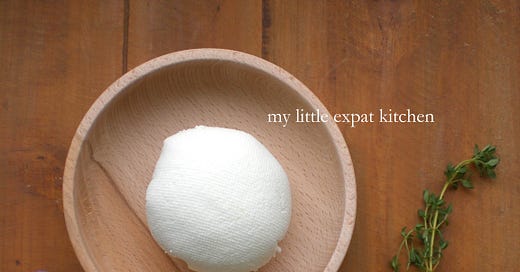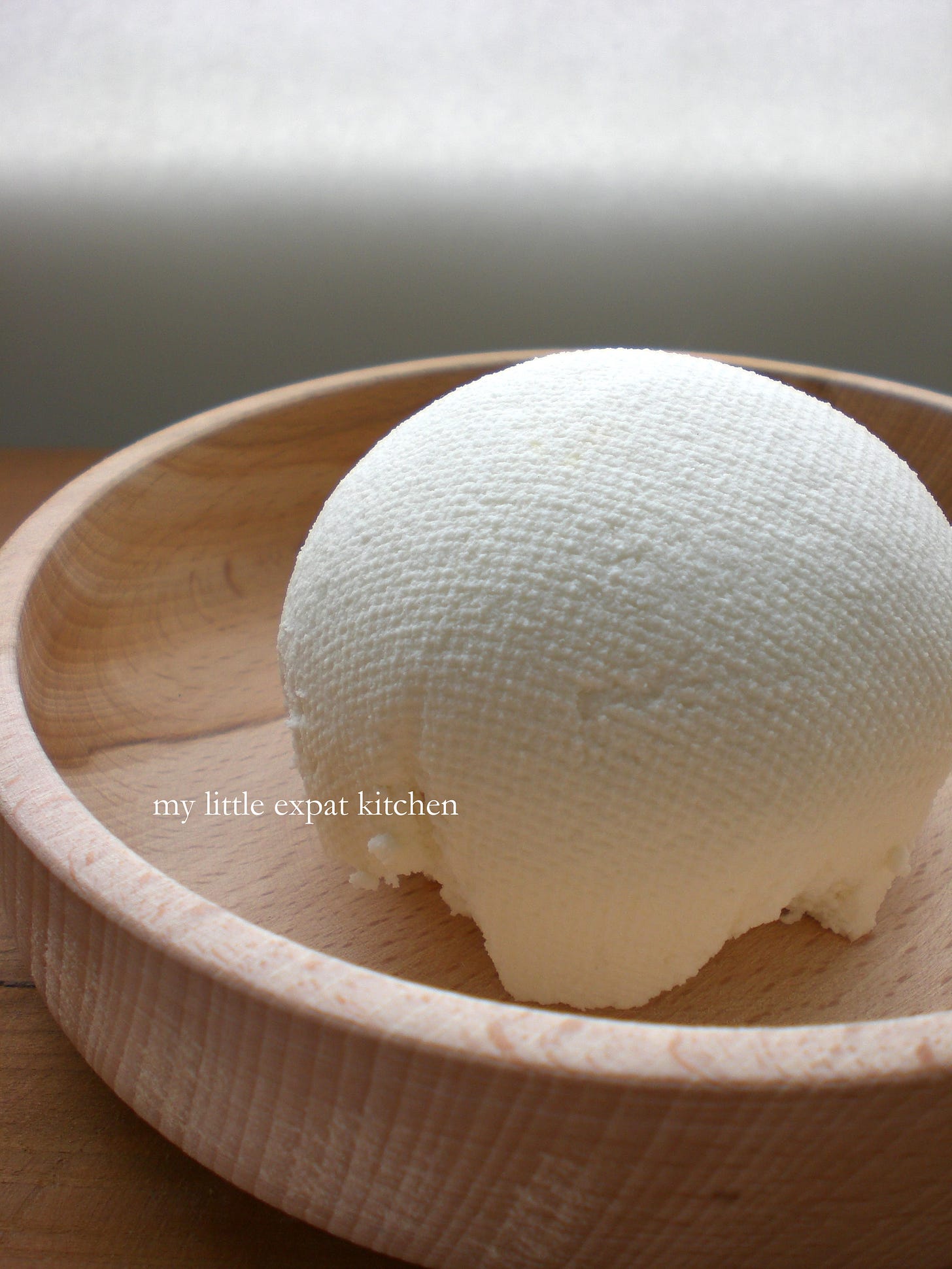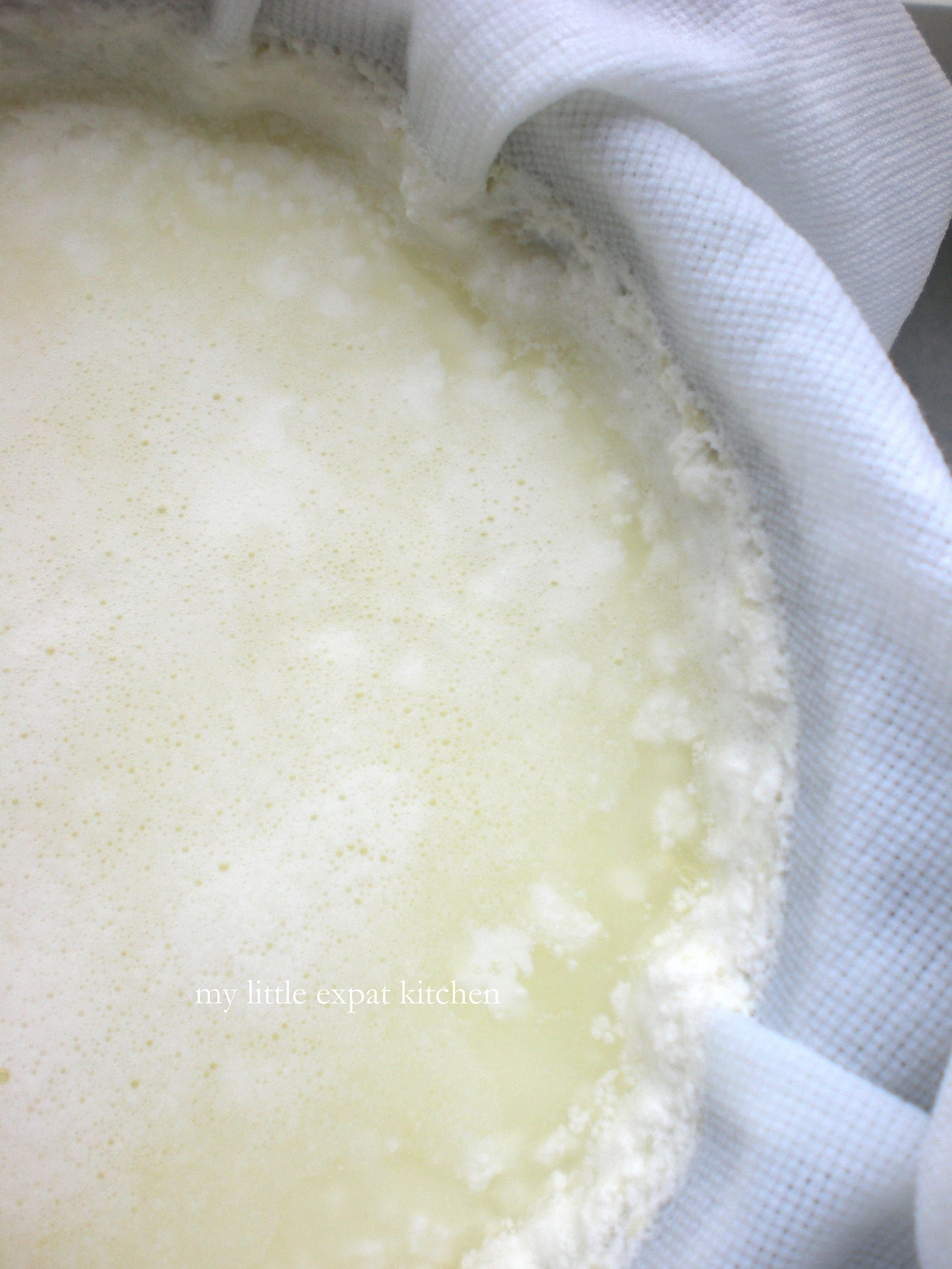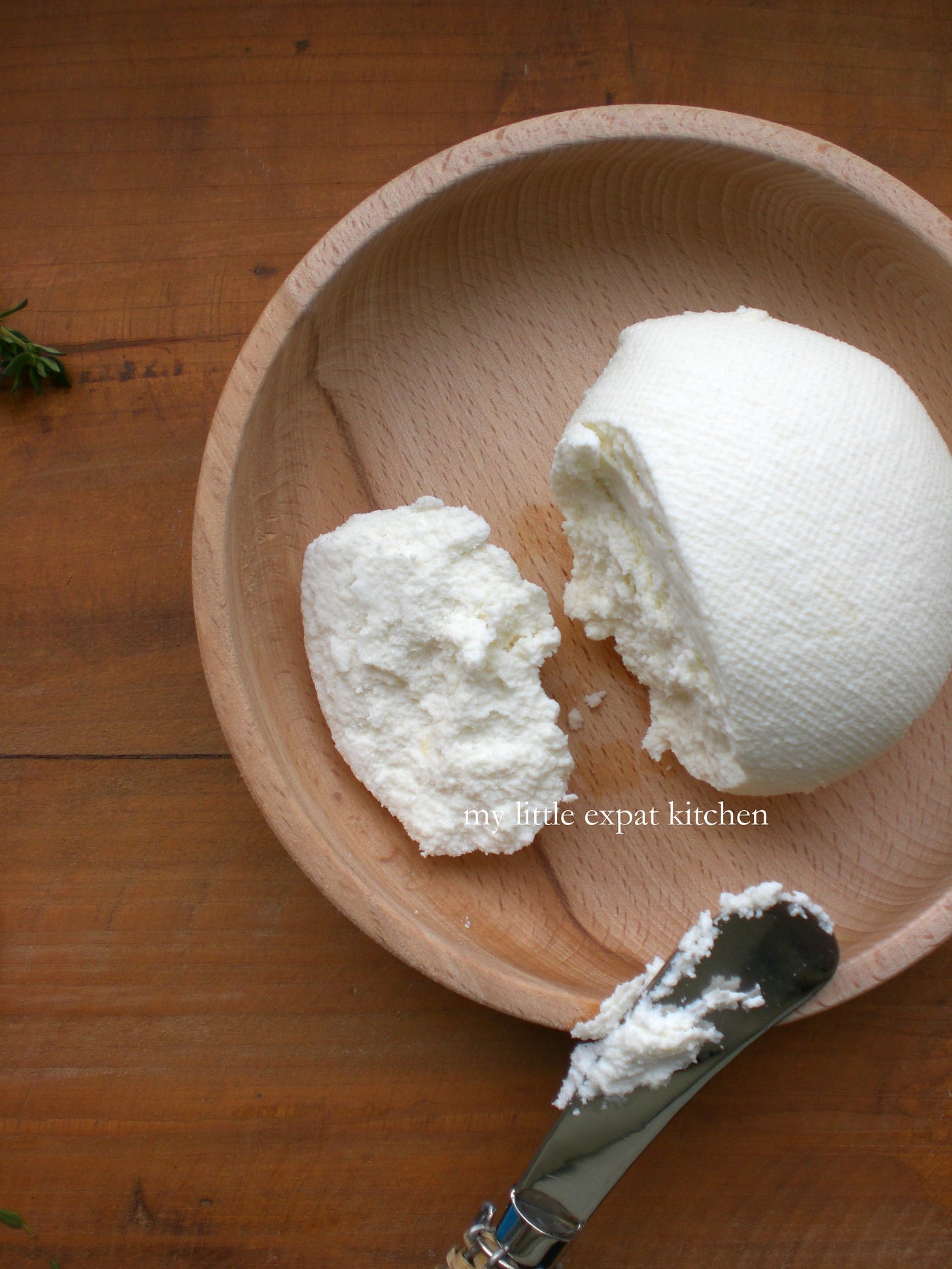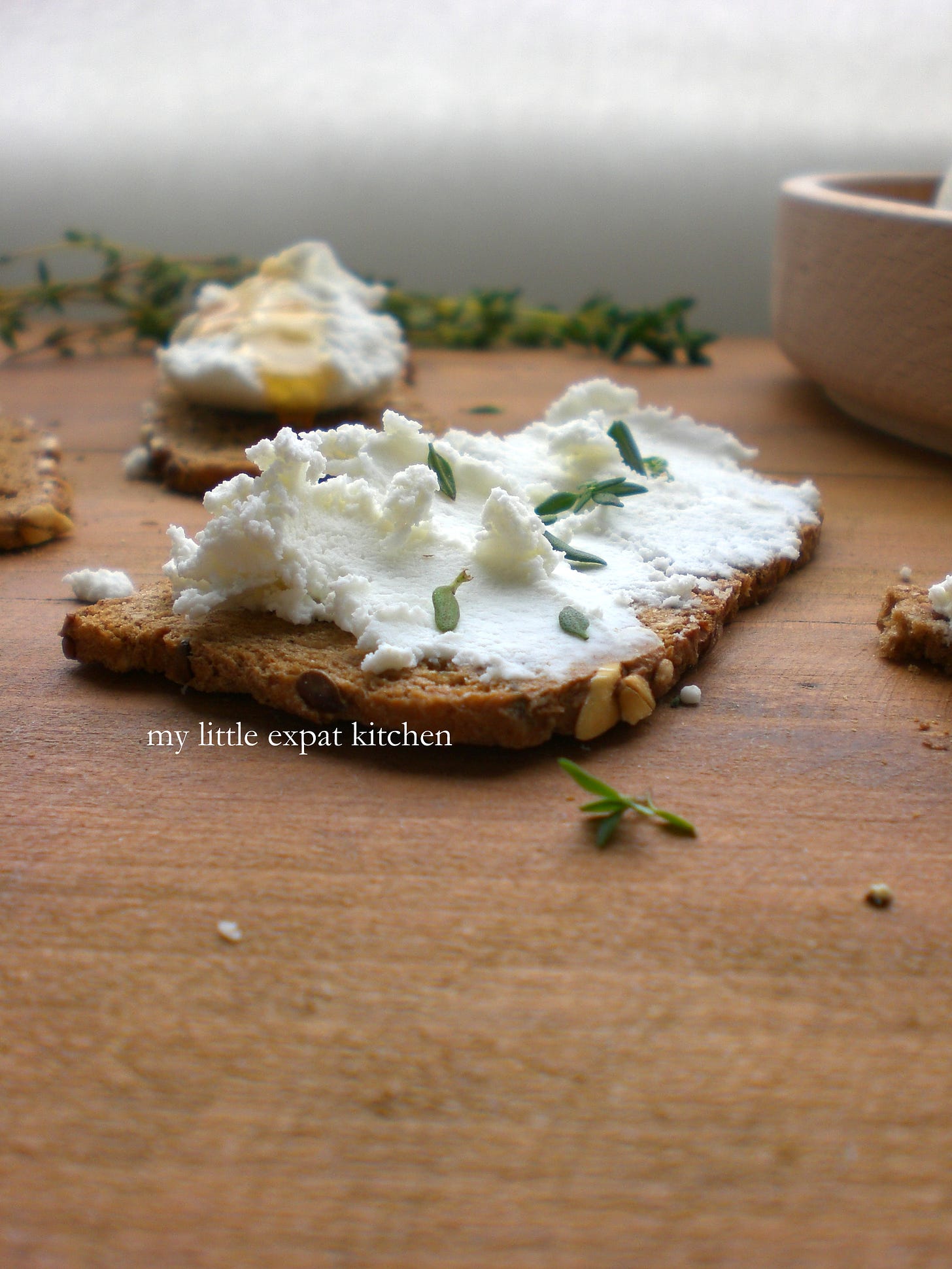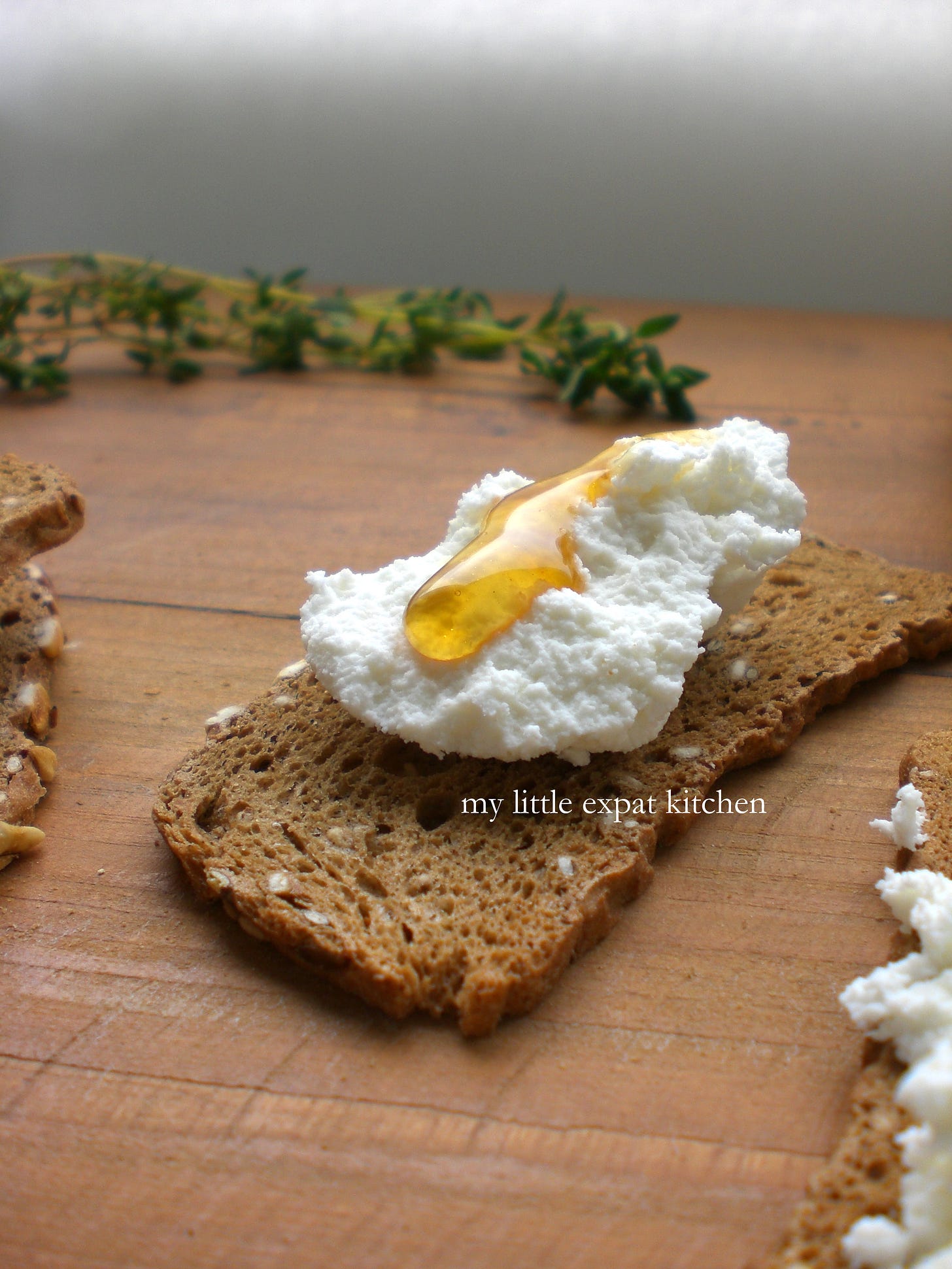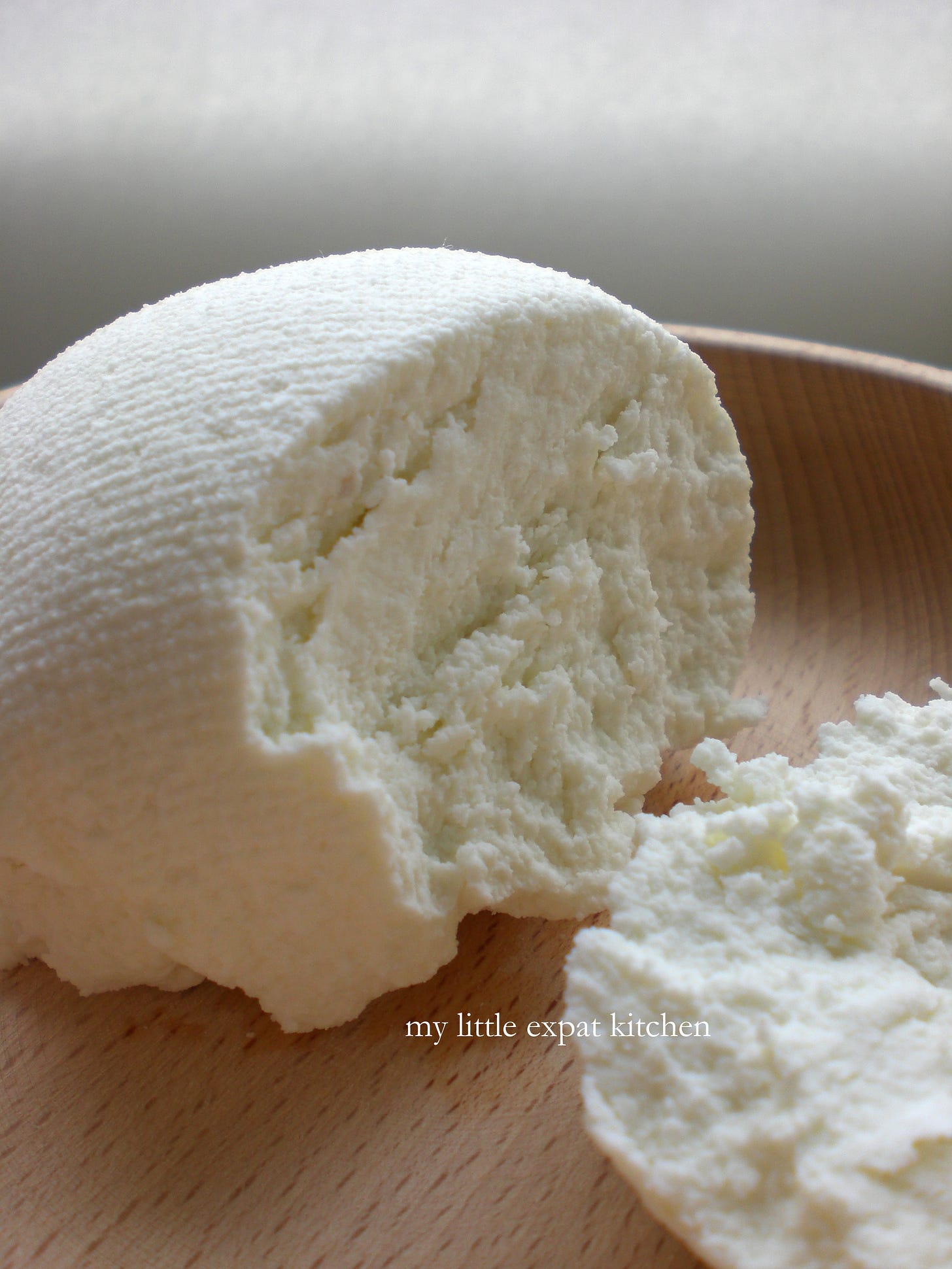Published originally on my blog on 20 April 2013
If someone put a gun to my head and told me to pick between savory and sweet, I would definitely go for savory. No second thoughts. There are so many options with savory food, you can make anything your heart desires, from fish and meat to pasta and every kind of salad imaginable. You can be freer, you can improvise, cook on a whim, not worry about grams and egg sizes and baking pan dimensions.
I could never live without my favorite savory dishes but I can live without sweets, well, at least for a day or two. There is something you can make though, that with the right combination, can offer you the best of both worlds. Something that can be used both in savory and sweet dishes. That is of course chèvre aka goat’s cheese. [Chèvre means goat in French].
The tart flavor of goat milk is what makes this cheese unique and the tang is what makes it pair so well with spinach and beef but also with honey and fruits.
Soft, crumbly, moist goat’s cheese is so easy to make at home that it’s crazy not to try it. The freshness, the aroma, especially when still warm, is incomparable to the mass-produced goat’s cheeses that you find at your local supermarket.
In my humble opinion, chèvre is far better tasting than ricotta or similar soft cow’s milk cheeses as it is more complex, creamy and rich due to the fact that goat’s milk has more fat than cow’s milk. And when you are lucky enough to find goat’s buttermilk and add it to the mix, it gives the cheese even more depth of flavor.
I have made chèvre many times and it always disappears from the fridge in a matter of hours. We like to smear it onto freshly toasted baguette slices or homemade barley bread drizzled with Greek extra virgin olive oil. It’s a snack that can only be surpassed by juicy tomatoes on sourdough but let’s not go there yet.
As I stated in the beginning of this post, this cheese is versatile in every sense of the word. You can add it to spanakopita or tyropita along with some good Greek feta, on top of tartines, or perhaps in this smoked trout and lentil salad. Crumbling it on top of pizza is an excellent idea, but so is adding it in a sweet tart with pistachios and honey. You can add some herbs like rosemary or thyme to your freshly made, supple cheese and serve it alongside crostini or grissini, or add it to an omelette which will most probably equal to the simplest, tastiest lunch you’ve had in months.
It’s just a matter of waiting; waiting for the whey to drip out, waiting for the cheese to dry. You will have to be patient, but in the end you will be rewarded with the clean, tangy taste of fresh, homemade chèvre.
Homemade Chèvre - Goat’s cheese
The process of making this cheese is very easy but you will need a thermometer. It really helps and, if you cook a lot, it’s a good idea to buy one.
If you can’t find goat’s buttermilk which luckily I did, use cow’s buttermilk.


